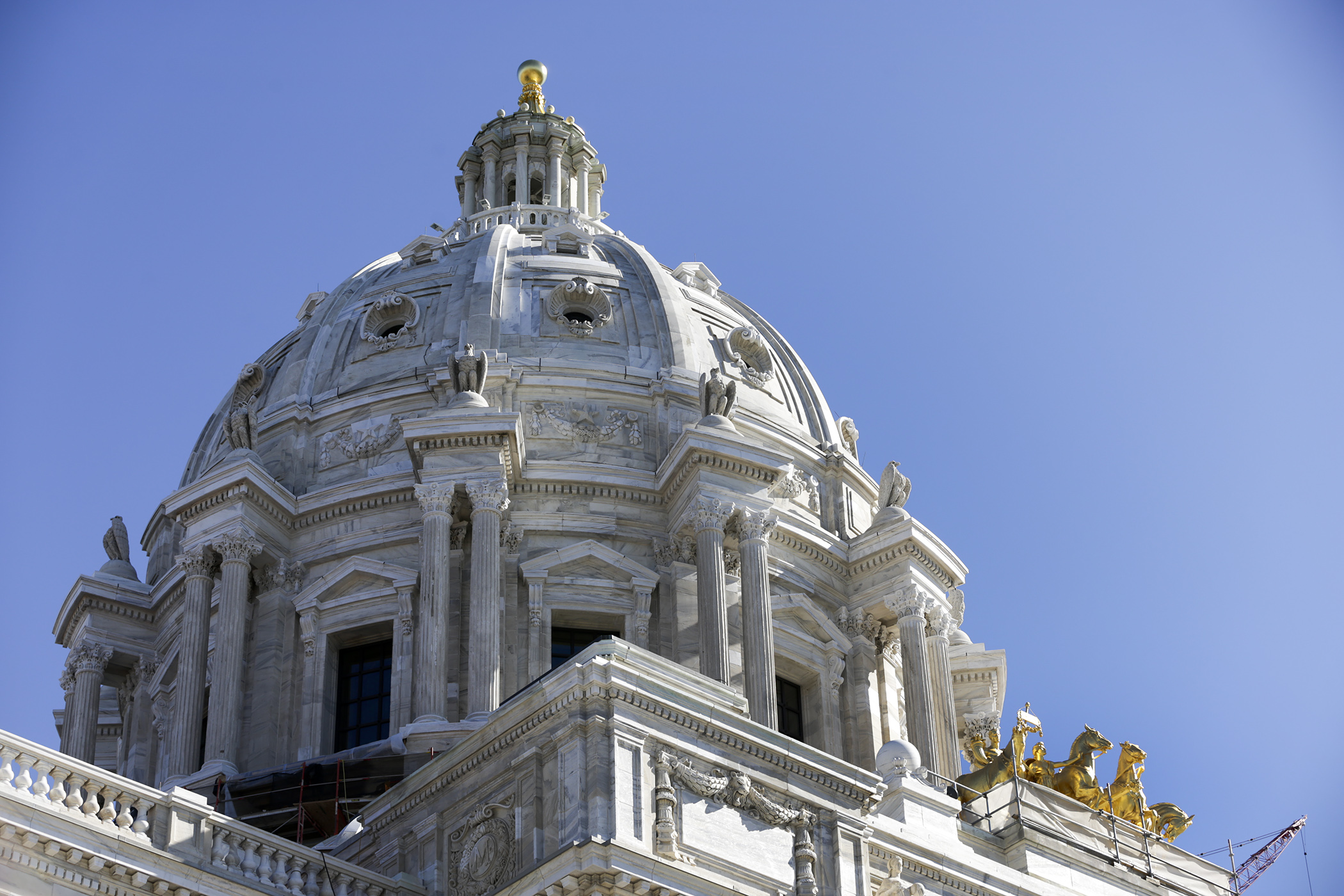A red-number day: state’s new budget forecast projects $2.4 billion deficit

UPDATED 3:40 p.m.
Faint hopes of new state spending took a hefty hit Tuesday.
Officials from Minnesota Management and Budget released an interim budget projection showing the state faces a nearly $2.43 billion deficit for the remainder of the current biennium, which ends June 30, 2021. It’s the first time the number is in the red since the Great Recession.
The new number represents a nearly $4 billon change from what was projected 10 weeks ago.
The full forecast released in February projected a $1.5 billion budget surplus. Because the next forecast is not scheduled until November, officials note this projection has limited updated estimates of expected revenues and expenses. It also reflects appropriations enacted this session.
Basic economic math is the issue. Budget officials said state revenues in the biennium are expected to be $3.61 billion lower than previously projected; spending $391 million higher.
“Last month at the State of the State address, I said it was going to be a long, dark winter, and I said there’s going to be some tough days ahead of us, but we need to know what we’re facing,” said Gov. Tim Walz.
“We’re in a difficult time, but we will get through this together,” added MMB Commissioner Myron Frans.
Because COVID-19 has become a nationwide pandemic the state has had to pay plenty to prevent its spread and protect the population. The Legislature has thus far passed $551 million in COVID-19 relief with more likely needed.
Stay-at-home orders and business closings have dramatically altered the state’s spending landscape leading, in part, to reduced sales tax collections. For example, February and March tax revenues were $103 million (3.8%) less than projected. Additionally, some tax deadlines have been extended leading to reduced cash flow.
Minnesota has thus far received $1.87 billion from the federal CARES Act to help with pandemic-related costs. The money cannot be used to refill state coffers.
Walz says it’s time to thoughtfully make “hard decisions,” and that “everything is on the table.”
“Minnesota has managed our state budget well. We have made smart decisions in preparations for an economic downturn,” Frans said. “None of us estimated this type of a downturn given a global pandemic.”
The state’s budget reserve has nearly $2.4 billion and the cash flow account balance is $350 million. Using those funds is prohibited without an updated projection. Unlike the federal government, Minnesota cannot run a budget deficit.
Frans said Walz has the legal authority to use the reserve to restore a balanced budget, but he cautioned against using every cent because 14 months remain in the biennium and so much uncertainty remains. Unallotment — executive power to unilaterally cut spending— cannot be used until the budget reserve is depleted.
[MORE: Unallotment law summary from the nonpartisan House Research Department]
State leaders are also urged to look past the current biennium.
According to the projection, “It is not possible to accurately project state revenue and spending into the FY 2022-23 biennium. However, it is likely that the negative impact on the state budget in the next biennium will be significant.”
A $48.5 billion biennial state budget was passed last year.
Digging into the numbers
State Economist Laura Kalambokidis said IHS Markit, the state’s macroeconomic consultant, is now forecasting a recession that lasts three fiscal quarters resulting in a 5.4% decline in real GDP in 2020, but increasing 6.3% in 2021. The February projection was 2.1% growth in 2020. In addition, real consumer spending is slated to decline 5.5% this year.
“The shock to the U.S. economy from the pandemic is unprecedented in modern post-war history and the economic outlook is exceptionally uncertain and volatile,” she said. “Economic outcomes will depend critically on the pandemic’s course, prospects for an effective treatment and vaccine, government restrictions on government activity, consumers’ and businesses’ responses as those restrictions are lifted, and the impact of fiscal and monetary policies.”
Sales tax revenue is expected to be $1.35 billion less than previously forecast.
More than 600,000 Minnesotans have filed for initial claims for unemployment.
“As employers reduce hours, cut pay and lay off and furlough workers, we estimate the total Minnesota wage and salary income will decline 5.9% this year,” Kalambokidis said. Wage income is expected to slowly grow next year, but not reach pre-pandemic levels until 2022.
Importantly, she notes 14 months remain in this biennium and that small changes can affect the total picture.
“We do not need to solve all of our budget problems by May 18," Frans said, noting the date by which lawmakers must adjourn sine die. “… It is likely we will need to adjust this budget several times throughout the course of the remaining biennium. We should not overreact or under-react. We need to continue being focused, targeted and strategic in our responses.”
Related Articles
Search Session Daily
Advanced Search OptionsPriority Dailies
Ways and Means Committee OKs proposed $512 million supplemental budget on party-line vote
By Mike Cook Meeting more needs or fiscal irresponsibility is one way to sum up the differences among the two parties on a supplemental spending package a year after a $72 billion state budg...
Meeting more needs or fiscal irresponsibility is one way to sum up the differences among the two parties on a supplemental spending package a year after a $72 billion state budg...
Minnesota’s projected budget surplus balloons to $3.7 billion, but fiscal pressure still looms
By Rob Hubbard Just as Minnesota has experienced a warmer winter than usual, so has the state’s budget outlook warmed over the past few months.
On Thursday, Minnesota Management and Budget...
Just as Minnesota has experienced a warmer winter than usual, so has the state’s budget outlook warmed over the past few months.
On Thursday, Minnesota Management and Budget...